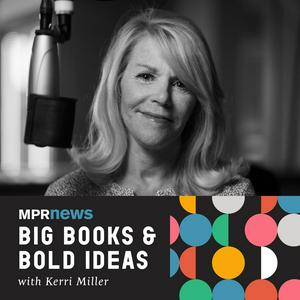Mike Osterholm reflects on lessons from the pandemic in 'The Big One'
When the next pandemic hits, will we be ready?That’s the question at the center of University of Minnesota epidemiologist Mike Osterholm’s new book, “The Big One.” And his answer is sobering.Osterholm joined Kerri Miller on this week’s Big Books and Bold Ideas for a blunt and personal assessment of what went right and what went wrong during the COVID-19 pandemic. He’s insistent that if we don’t learn the lessons of the last pandemic, we will be even less prepared for the next one.Here are five key takeaways from their conversation.1. Public health communication can’t just be factual.Osterholm is the founding director of the Center for Infectious Disease Research and Policy at the University of Minnesota and has decades of experience tracking and researching outbreaks. He said the big lesson for public health leaders is that kindness and humility have to be forefront as they communicate.Humility is important, he told Miller, because “people mistakenly think that science is truth. It’s not. Science is the pursuit of truth.” He said the scientific community needs to do a better job explaining what we know now and how that might change as research continues.But the bigger lesson, for him, was that a “just the facts, ma’am” approach isn’t effective. Public health messages need to resonate with people on a personal level.Early in the pandemic, he broke down crying on his own podcast after a close colleague’s death. That human moment ended up being a connection point for people.“It wasn’t about the factual stuff I talked about,” Osterholm said. “It was about relating to people on that emotional level of what we were experiencing and how we reach out to each other. So the podcast became more and more of a blending of the science — what’s in the head — with concern for what’s in the heart.”2. When we know what stops transmission, go all-in on that. Once we knew that COVID-19 was an aerosol, Osterholm said, it should have shifted how we thought about transmission.“We spent millions of dollars on useless things like Plexiglass shields. I kept telling people: If you can put a cigarette on this side of it and smell it, you’re getting hit.”The only thing that really stops COVID-19 is a well-fitting N95 mask, said Osterholm. Instead of wasting time and money on hygiene theater and cloth masks, we should have “initiated a Manhattan Project-like activity to find the same kind of respiratory protection in something that’s wearable, something that could be washed and reused over and over again, something that people could communicate in and not feel claustrophobic.”“And do you know how much we’ve invested in that?” he asked. “Zero.”3. Mandates aren’t a magic solution.While he absolutely believes the COVID vaccines saved lives and are safe, Osterholm isn’t sold on the efficacy of mandates.“In some cases, I think we set ourselves back with a mandate,” he told Miller. “If you want to turn someone off so you never have a chance to reach them, tell them they have to do it.”A better way, he believes, is to give people agency.“What you find is, that if you actually work with people and say, ‘OK, you’re not going to get it now, but let me give you more information,’ you actually get more people vaccinated. And the whole point for me is: I want the most number of people vaccinated.”4. The lack of a nonpartisan reports to examine the errors made during COVID-19 is glaring.Osterholm strongly believes there should be a federal, 9/11 Commission-style report that looks back at COVID-19. He and his coauthor, Mark Olshaker, wrote “The Big One” because there isn’t one.“We wanted to make certain there was a record somewhere of what happened or didn't happen and what … could have made a difference,” he told Miller.One example: Osterholm contends widespread lockdowns were ineffective and crude.“The most important thing was having good medical care, and how are you going to get good medical care if your hospital is at 140 percent capacity? You can’t.”Instead, he said, we should have used strategic “snow days” with the goal to keep hospital beds under 90 to 95 percent occupancy.“If we could do that, we could get good medical care that would make a difference” in saving lives, he said, without stalling the economy or forcing kids to do school at home.5. We are going backward on preparedness for the next pandemic.But as sobering as the past is, Osterholm was most dire about what comes next.“We are living in the most dangerous time that public health has experienced,” he told Miller. “[The current administration] has taken the public health system as we know it and gutted it in this country. [Look at] what's happened at the CDC this past week, with the firing of the new director who has been there a month, the loss of the senior people there, the fact that the one redeeming, hopeful lesson we learned during the pandemic is how important vaccines could be. And now we have stopped all research on the one vaccine that holds the best future for us with influenza pandemics and COVID pandemics. We live in a very anti-science world right now. And I never thought that I would see the day that the CDC, the NIH and the FDA are enemies of public health, as opposed to the protectors of it.”Subscribe to the Thread newsletter for the latest book and author news and must-read recommendations.Subscribe to Big Books and Bold Ideas with Kerri Miller on Apple Podcasts, Google Podcasts, RSS or anywhere you get your podcasts.


